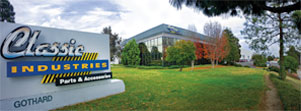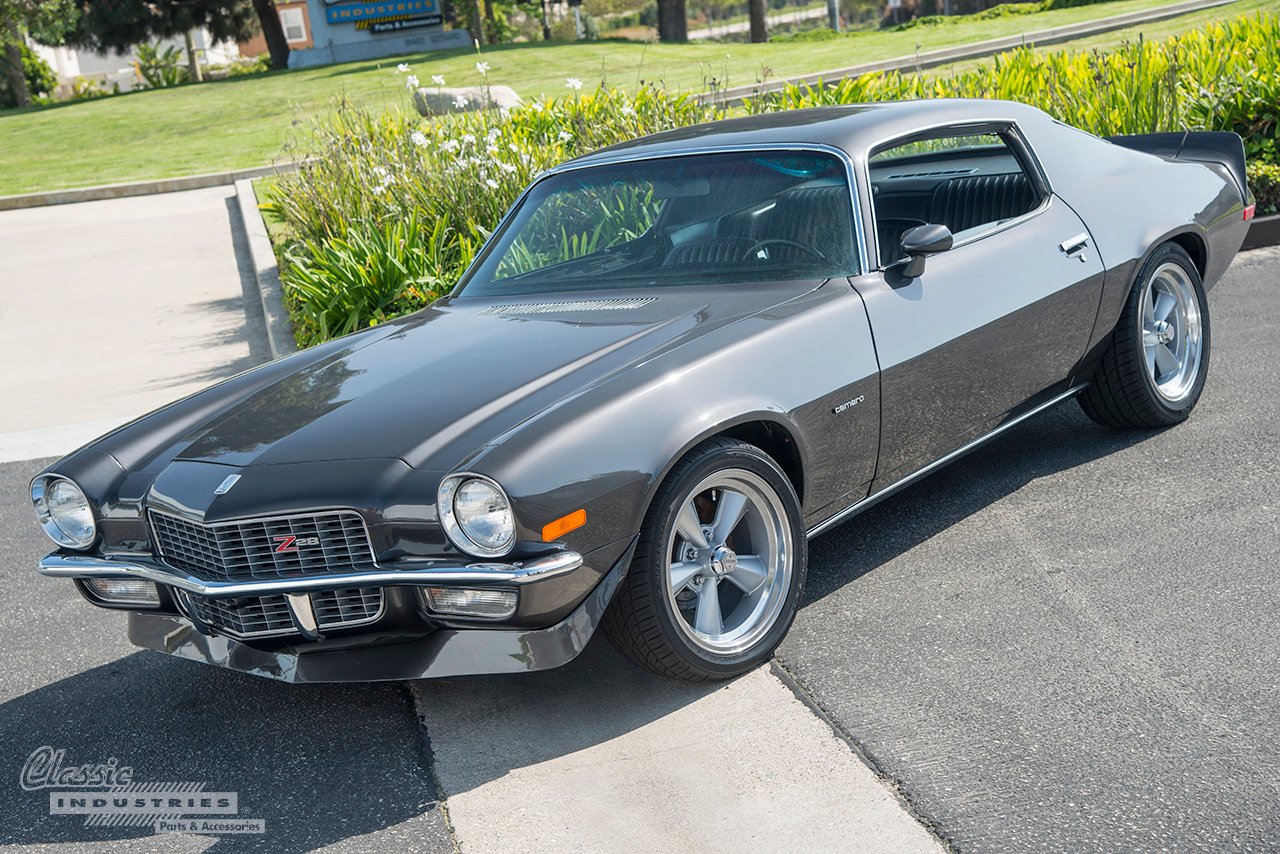
The initial production run of the Chevrolet Camaro began with the 1967 model year and ended in 2002. Thankfully, that end was only temporary, since the Camaro returned in 2010 and is still in production to this day. Enthusiasts commonly split the Camaro's history into distinct generations, with each representing a major change to the body style and features. The first four Camaro generations cover the 1967-2002 model years. Today, we'll take a look at how to identify the first-gen, second-gen, third-gen, and fourth-gen Camaro, as well as estimated Camaro production numbers for each year.
Camaro Production Numbers: First Gen - 1967-69
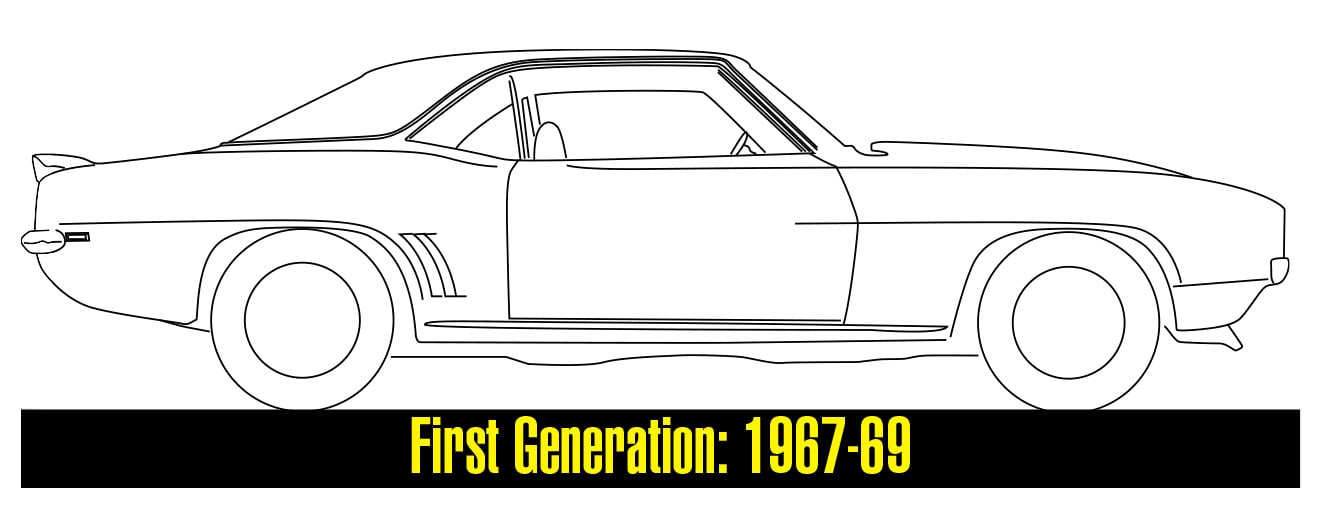
The first-gen Camaro was released in 1967 and continued through 1968 and 1969. This new model based on the F-body platform became an immediate hit, and its production numbers reflected the buyers' interest. Its styling featured a balance of smooth curves and elegant angles, as well as now-iconic features such as the optional hidden headlamps. The first generation of the Camaro was available in two-door Sport Coupe and Convertible variants. Engine choices included two inline-sixes and a wide range of small-block and big-block V8s. Packages/trim levels included Standard, Super Sport (SS), Rally Sport (RS), Z28, and ZL1 (only available in 1969).

Since the Camaro premiered in 1967, Camaro enthusiasts want to know how many 1967 Camaros were made. Here are the estimated production numbers for the first-generation Camaro:
- 1967 220,906
- 1968 235,147
1969 243,085
Note: These production numbers are not exact. They were compiled from reliable resources, but even Chevrolet, or GM, does not know exactly how many Camaros were delivered to the public.
Camaro Production Numbers: Second Gen - 1970-81
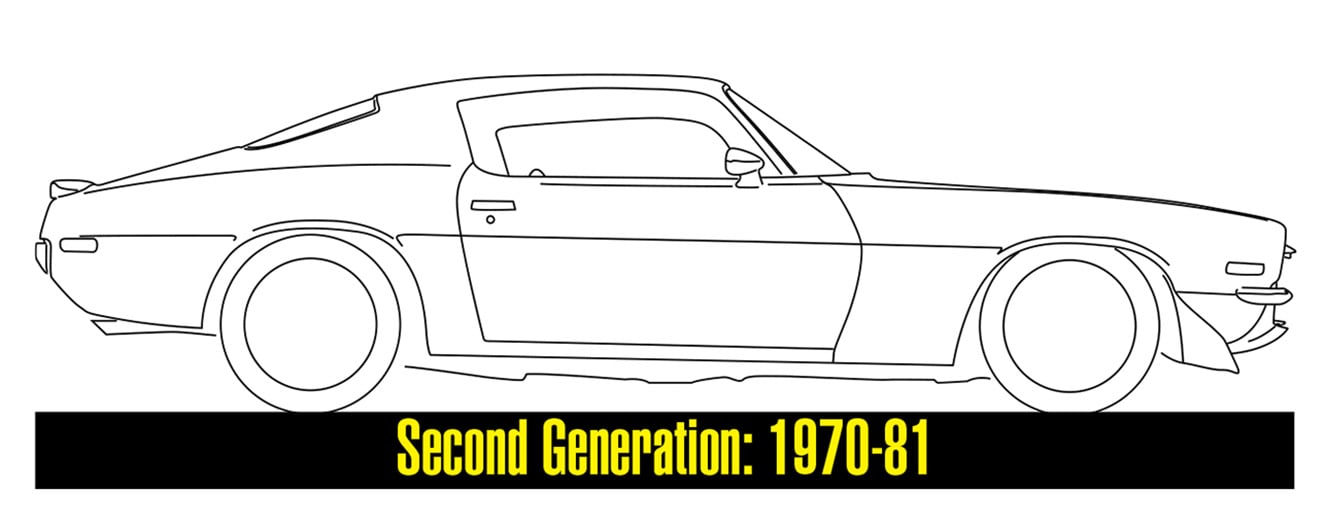
For the 1970 model year, Chevrolet released the updated second generation Camaro, which would continue through the 1981 model year. Like its predecessor, it was still based on the GM F-body platform, but it now featured a sleeker roof line and a more prominent chevron-shaped grill. No convertible variant was available, but later models offered T-tops for an open-air driving experience. The second-gen Camaro arguably changed more than the other generations over the course of its 11-year production run, but never lost its charm. Packages/trim levels included Standard, Super Sport (SS), Rally Sport (RS), Z28, Type LT, and Berlinetta.
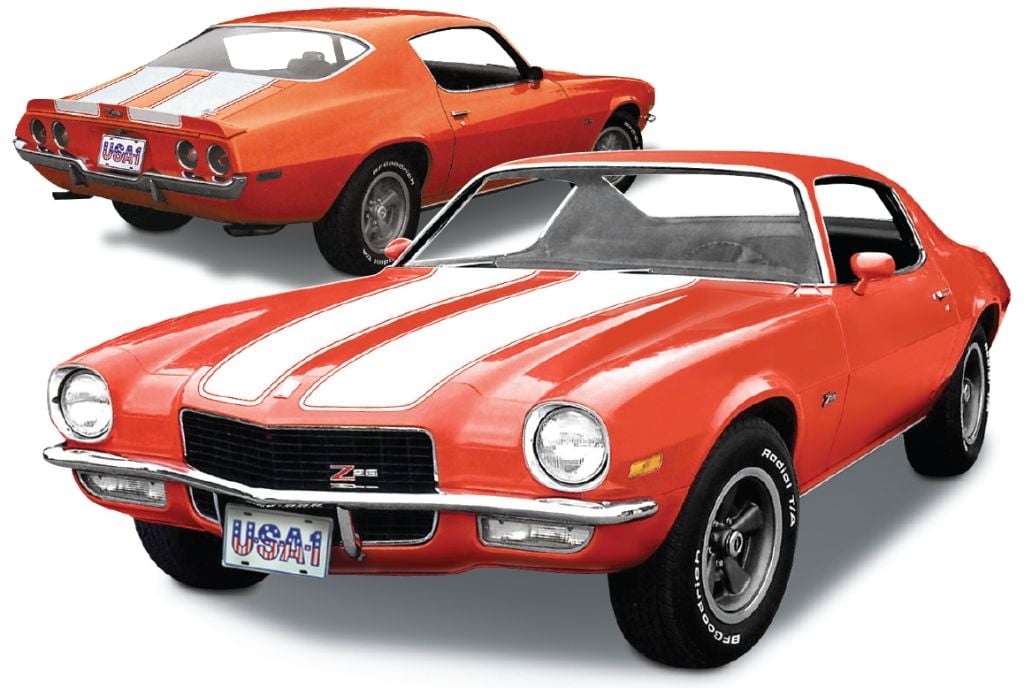
Here are the estimated production numbers for the second-generation Camaro:
- 1970: 124,901
1971: 114,630
1972: 68,651
1973: 96,751
1974: 151,008
1975: 145,770
1976: 182,959
1977: 218,853
1978: 272,631
1979: 282,582
1980: 152,005
1981: 126,138
Note: These production numbers are not exact. They were compiled from reliable resources, but even Chevrolet, or GM, does not know exactly how many Camaros were delivered to the public.
Camaro Production Numbers: Third Gen - 1982-92
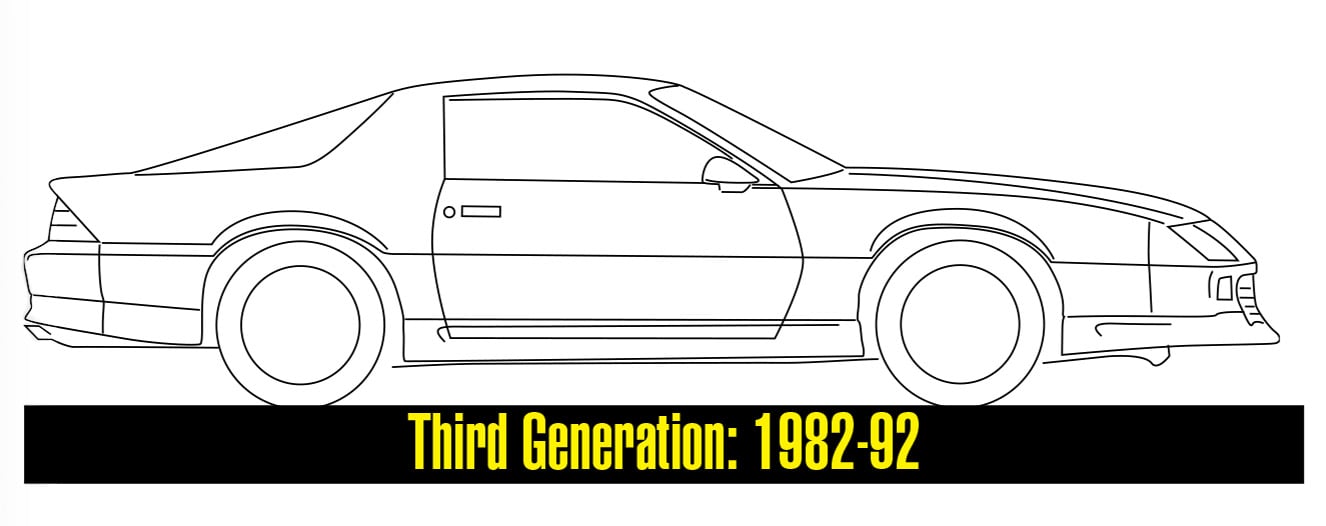
The Camaro's third generation began in 1982 with an all-new design that featured more angular accents paired with an even more aerodynamic roof line. This model, and especially its high-performance IROC-Z variant, is seen as a quintessential representation of the '80s today. It's also an excellent platform for affordable restoration and performance upgrades. Body styles included a two-door Sport Coupe (with or without T-tops) and a Convertible; packages/trim levels included Berlinetta, RS, Type LT, Z28, Z50 Indy Edition, and IROC-Z.
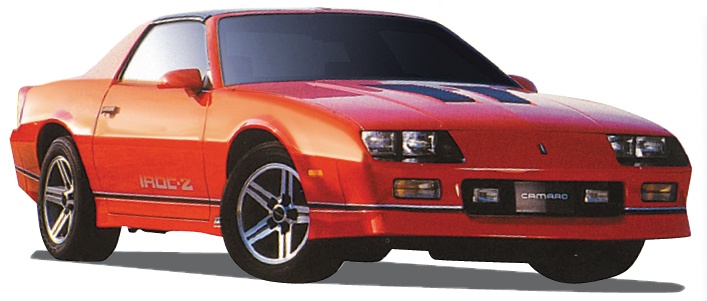
Here are the estimated production numbers for the third-generation Camaro:
- 1982: 189,735
1983: 154,381
1984: 261,591
1985: 180,018
1986: 192,219
1987: 137,760
1988: 96,275
1989: 110,739
1990: 35,000
1991: 100,838
1992: 70,007
Note: These production numbers are not exact. They were compiled from reliable resources, but even Chevrolet, or GM, does not know exactly how many Camaros were delivered to the public.
Camaro Production Numbers: Fourth Gen - 1993-02
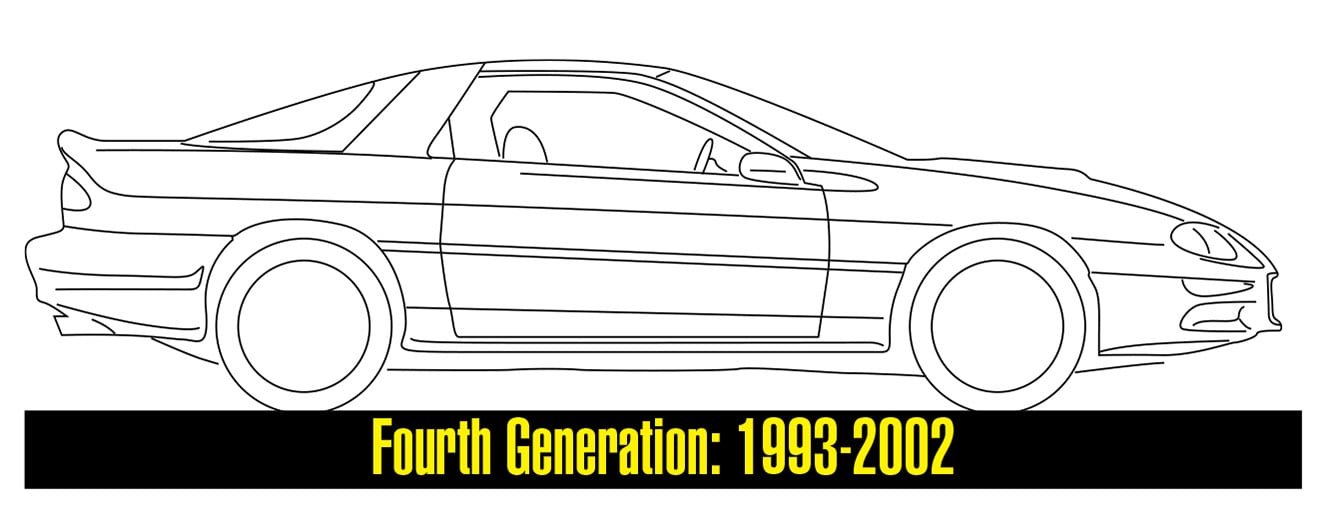
In 1992, the next iteration of the Camaro was released on the GM F-body platform. The fourth-gen Camaro's styling was a clear departure from the angular third-gen, with smooth curves and increased integration of fiberglass and polymer panels. The new LT1 and LS1 V8 engines responded well to performance upgrades, making the fourth-gen an excellent candidate for modifications. It was offered in two-door Coupe and Convertible body styles, with T-tops still available as an option on Coupes. Packages/trim levels included Standard, RS, Super Sport (SS), Z28, 30th Anniversary Z28, and 35th Anniversary Super Sport.
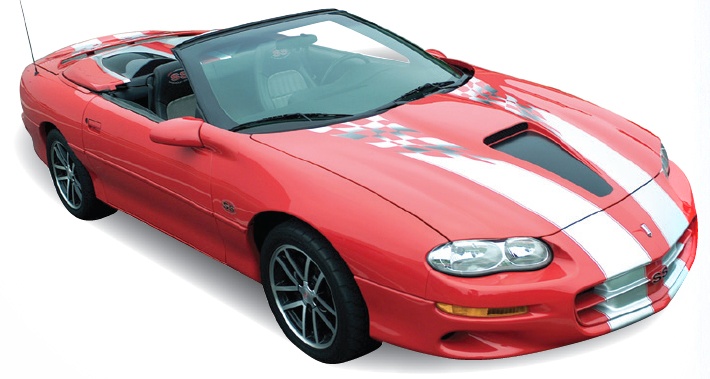
Here are the estimated production numbers for the fourth-generation Camaro:
- 1993: 40,224
- 1994: 125,244
1995: 122,725
1996: 61,362
1997: 54,972
1998: 49,218
1999: 42,098
2000: 45,461
2001: 29,009
2002: 41,776
Note: These production numbers are not exact. They were compiled from reliable resources, but even Chevrolet, or GM, does not know exactly how many Camaros were delivered to the public.
More Classic Car Specifications & VIN Decoders
If you're interested in researching other classic cars, check out some of the previous entries in our VIN decoder and classic car history series:
Need 1967-02 Camaro Parts?
Classic Industries offers a huge variety of restoration and performance parts for every model year of the first-generation, second-generation, third-generation, and fourth-generation Camaro. If you own one of these classic cars, click the button below to get a free parts catalog and see how we can help you build the Camaro of your dreams.




